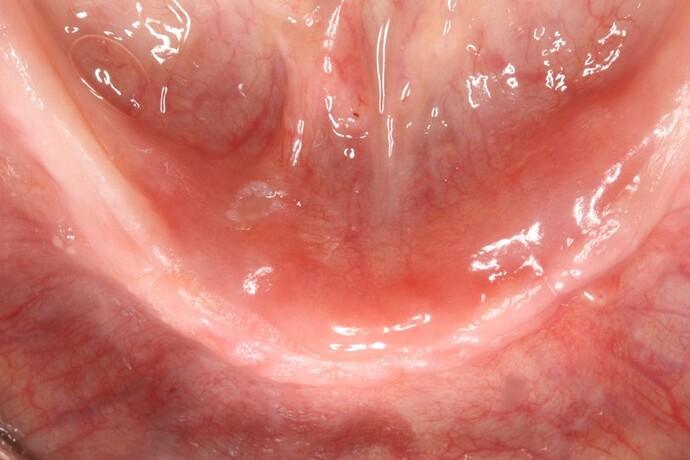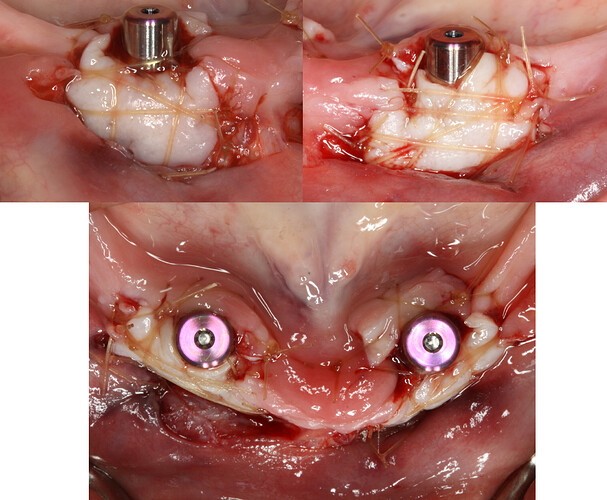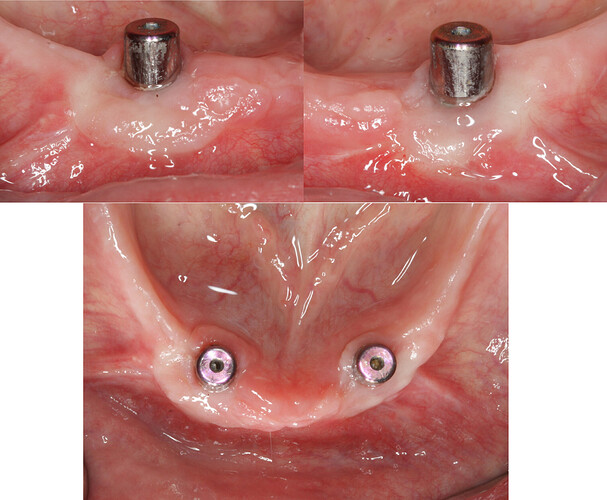In this case, even though there is a noticeable band of keratinized tissue where the dental implants were placed (1), if we were split this and push each half buccal and lingual, we would probably end up with no keratinized tissue after all said and done.
This is a great application for a free gingival graft and it does not require a separate surgery - it can be done at the time of surgical uncovery. The band of keratinized tissue is pushed behind the healing abutment and a partial thickness flap is prepared on the buccal as a recipient bed for the free graft (2). After 4 weeks of healing, we are able to achieve adequate tissue that will contribute to long term stability of the peri-implant tissue (3).
Photo 1
Photo 2
Photo 3
3 Likes
This is beautiful. Do you ever notice that patients with an old Free Gingival Graft in the lower anterior always have their teeth around the graft in good condition even after 30-40 years. That is because that thick connective tissue “Protects” the underlying stuff just like a Gore Tex outer shell protects our bodies from the elements. This is the typeof stuff that never gets taught in any CE course because the company sponsoring the course cant sell autogenous soft tissue. Excellent job!!!
1 Like
An excellent case based on an excellent philosophy. In this particular patient, where was the graft taken of?? Thanks, and congratulations!!
This is actually the exact same approach I would use. When teaching this to residents I have found that most don’t understand the terminology of recipient bed and partial thickness flap so I understand why this is such a rare observation to see soft tissue being appreciated. While I would not suggest anything different I have also accomplished this same thing via a subepithelial connective tissue graft at the time of implant placement… I really hate doing 2 stage implants so I have spent years developing techniques to avoid the phase 2 uncovering procedure. Obviously the particular situation will dictate the technique but this is a tried a true procedure that is seriously underutilized. I will just declare now that this cannot be accomplished with any commercially available graft/membrane combo and the overwhelming majority of those combos should have the overlying soft tissue augmented as such.
@drgustavobaez this was n autogenous graft from the palate. Results are almost 100% predictable but unfortunately have to manage the morbdidity of the pain from the palate.
@tcperio completely agree with avoiding 2 stage when possible. For an overdenture case, if the patient is going to wear an immediate CD, I dont really have a choice in the matter- unless you have another suggestion?
Clearly there are situations where it is necessary to submerge fixtures and an overdenture case would certainly be one of those. I completely agree with your approach and great job!!! If only we could get the titanium screw industry to appreciate the importance of the outer layer then this would not be such a rare event to be discussing something so simple as this…


